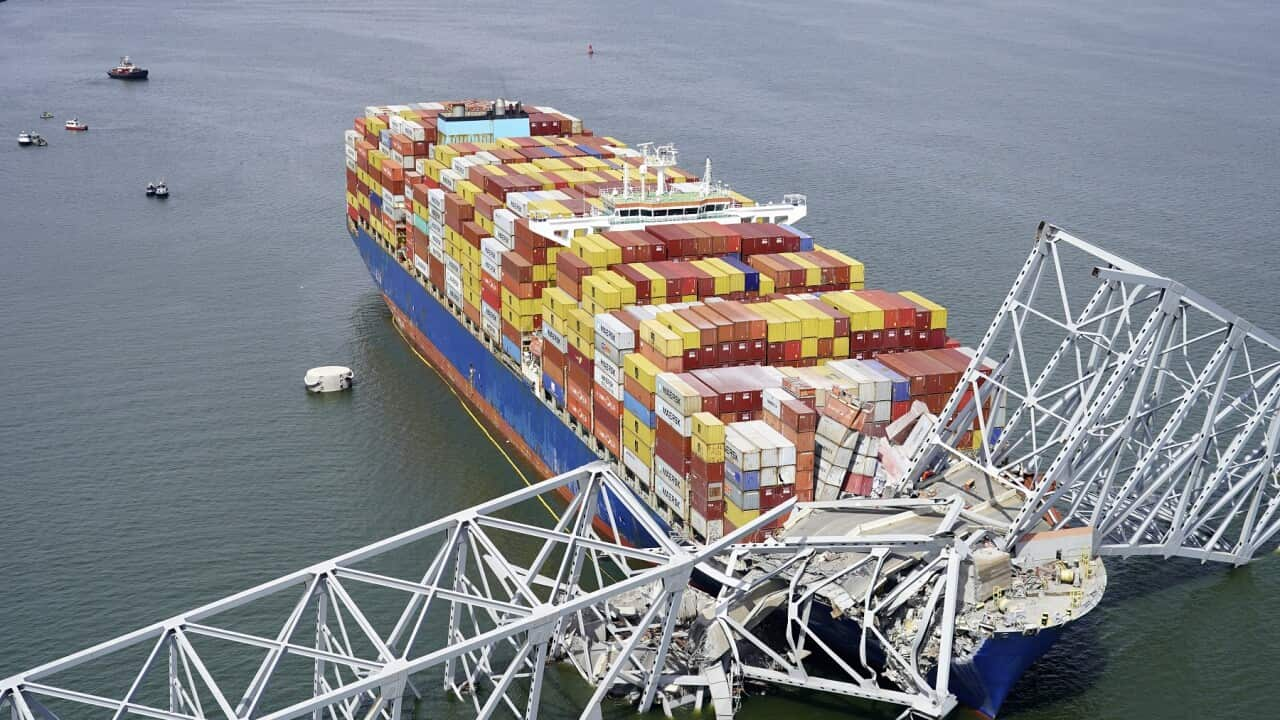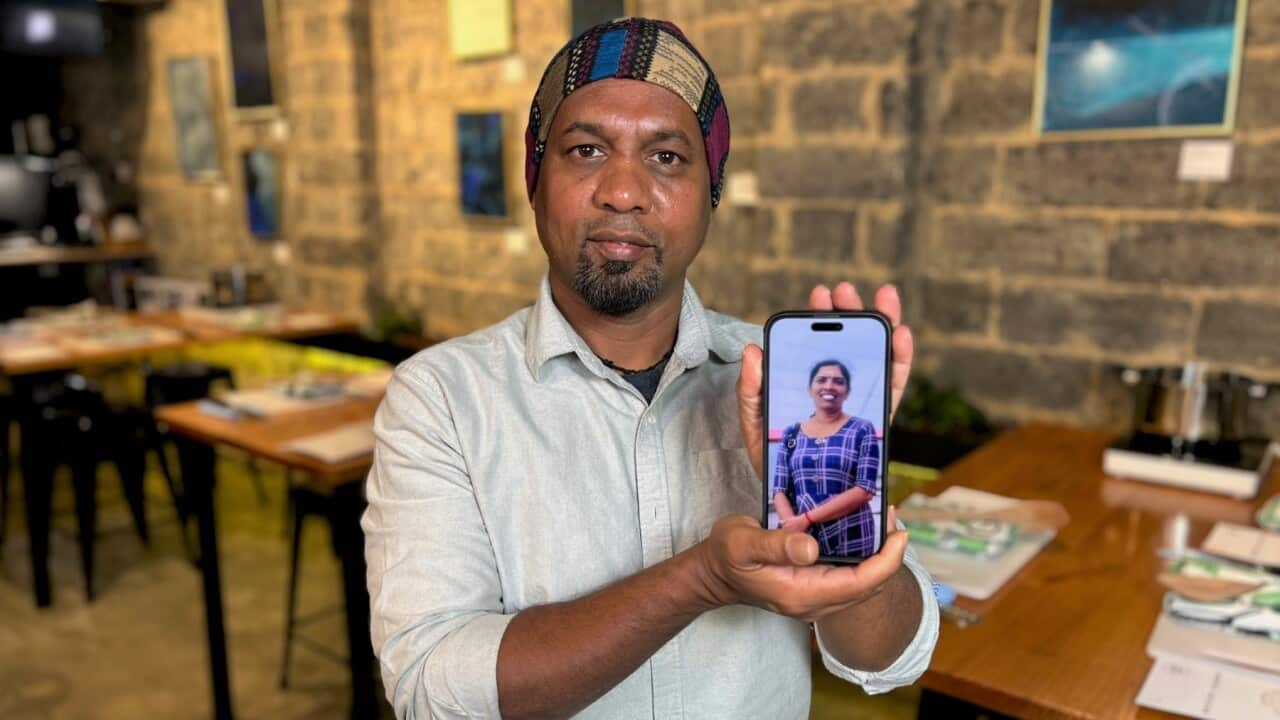TRANSCRIPT
Martin Suazo Sandoval [[mar-tee swar-zo san-duh-varrrl]] is in Azacualpa, a rural town in Honduras.
He's the brother of one of the victims missing in the Francis Scott Key Bridge collapse in the United States city of Baltimore.
Maynor Yassir was his name, and he was 39, the youngest out of the his eight siblings.
Martin describes him has a trailblazer.
(Spanish, then translated) "Then he became a fundamental pillar, a bastion so that others in the family could also travel over there and then get visas and everything. He was a driving force so that the majority of the family could travel."
Maynor Yassir is one of the six construction workers who went missing in the Baltimore bridge collapse, after its collision with Singapore-flagged container ship the Dali.
Authorities say all the victims originally hailed from across Central America and Mexico before settling in the U-S state of Maryland.
Maryland State Police Colonel Roland Butler says divers have now discovered the remains of two of the workers tossed into the harbour by the collision.
"Divers located a red pickup truck submerged in approximately 25 feet of water in the area of the middle span of the bridge. Divers recovered two victims of this tragedy trapped within the vehicle. The victims were identified as Alejandro Hernandez Fuentes, 35 years old, of Baltimore. And Dorlian Ronial Castillo Cabrera, 26 years old, of Dundalk. Their family members were notified just over an hour ago in person by Maryland state police personnel."
Investigators from the U-S National Transportation Safety Board have also recovered the data recorder from the ship.
Data from the ship is hoped to provide investigators with a timeline of what happened.
Vice Admiral Peter Gautier [[gow-tee-ay]] from the U-S Coast Guard says there is no ongoing threat to the public from the spillage from the collision.
"And it does have 4,700 cargo containers on board. 56 of those contained hazardous materials and two are missing overboard. The ones that are in the water do not contain hazardous hazardous materials. And then around 13 or so on the bow, the ship were damaged as the bridge collapsed, impacted the front of that ship."
But, as for the damages to the bridge itself, and the U-S economy, it's predicted to be a big bill.
Analysts say the bridge collapse could cost insurers billions of dollars.
Transportation Secretary Pete Buttigieg [[boota-judge]] says the federal government is focused on four areas related to transportation as the investigation continues in Baltimore.
"Reopen the port, deal with the supply chain implications until the port does reopen, rebuild the bridge and deal with the surface transportation implications until the bridge is rebuilt. Each of those is a distinct line of effort, and we're already taking steps toward each goal."
Maryland Governor Wes Moore says its imperative to get the port of Baltimore and the bridge rebuilt as soon as possible.
"It's a huge economic impact for the country. And that's why I think when we've seen how the entire country has rallied around Maryland and rallied around Baltimore, it's because of they understand that the port of Baltimore, is not just impacting Maryland. If you look at this, we are .... this this port is responsible for over 51 million tons of foreign cargo. That's the largest in the country. That for everybody who is buying cars, for everybody who was buying farm equipment. We the largest port in the country that does that. So this is not just impacting Maryland. This is impacting that farmer in Kentucky. It's impacting that auto dealer in Michigan. And so it is imperative that we get this bridge rebuilt. It's imperative that we get the Port of Baltimore back up and going. And it's not just about how are we supporting Maryland -this is about how we support the American economy. "
So how can a new bridge be protected from another large ship?
"Could we build a Fort Knox? You know, a nuclear bunker in front of every bridge? It's structurally possible, but it's not economically feasible. And so even in the most extreme, bridge protection systems that we see, at this point, I remain unconvinced that in a similar incident that they would perform successfully."
That's Professor in Civil Engineering, Ben Schafer, from Johns Hopkins University.
He says maritime changes are needed to avoid a similar incident.
"There's the physical things that we should do in the new bridge, but it's probably the social things and many of the maritime changes that we might need to make to make the whole system work successfully so we don't have another bridge strike."
Engineers also say the metal truss-style bridge design, which has a suspended deck, contributed to its collapse.
A ship inspection last year found problems with the pressure gauge and propulsion systems.
According to a statement, the Chilean Navy's Maritime Authority says despite finding problems with the fuel's heater's pressure gauges, the issue was corrected before the ship left the port.
In the meantime, it's families like Martin Suazo Sandoval's who are awaiting more news on the missing victims who fell in the Patapsco River.
"My brother could swim and we have faith that he could have been able to get out anywhere, but we are still waiting for official news of what could happen. God willing my brother is alive, which is what we want most and ultimately if the worst should happen, then we will have to coordinate to repatriate his body."













